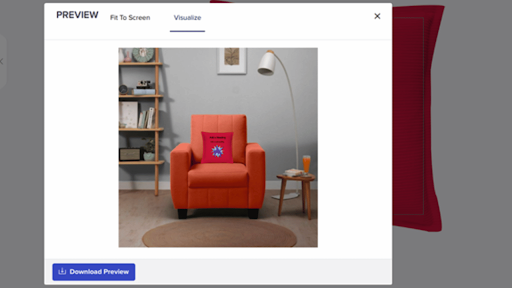“Your customers are moving online and so is your competition! We are heading towards a truly open market in the digital era.”
In the current competitive online market, there is so much content being generated that customers do not spare more than 2 seconds for a single piece of information. It takes extensive research, a creative approach and strategic planning to make customers stop their endless scrolling and prompt them to land on your digital platform.
Now imagine you do all this and bring the relevant traffic to your website but after spending some time on your website, they just abandon your cart or bounce to your competition! That is what happens when websites and online print shops have a digital marketing strategy in place but not a conversion optimization strategy.
Every business has set aside a budget for marketing and it is essential that you set aside some budget to optimize your conversion. In the printing industry where the players are spending lots of money on promotions, technology, and personalization, optimizing the conversion can be a tricky business.
There are a lot of conversion optimization tactics in the market and each has its own use and purpose. To help print businesses get an optimum conversion, we have curated a list of print industry-specific conversion tactics that are not just effective but easy to implement and affordable to continue.
Conversion optimization tactics that are best suited for an online print business:
1) Personalized products and experiences:
Personalization is one such aspect of conversion that applies to all the industries in the world currently. But, with the print industry, personalization is not just limited to the experiences and interactions; it can also be extended to the products of the brand.
Delivering personalized experiences can engage users and help them make informed decisions that are based on their preferences. Some of the best personalization options that are often used in the printing industry are personalized product suggestions, quick reorder options, content automation during checkout and shipping and other such product and navigation personalization.
While this ensures experience personalization, how can we cater personalized products that are affordable and feasible for mass execution? Check out the next point!
2) Online design tool:
Innovation is essential to stay up the competition curve in the current print market but how can businesses have continuous innovation that is affordable? Well, there is a solution for the print industry where they can not only have new product designs for each customer; they can do it without any graphics designer!
An online designer tool or a web-to-print solution is a technology that can be integrated into any online print store. The tool empowers your customers to design their own print products and send them for print. It comes with optimum customization options and other personalization capabilities that can make order management and customer management seamless for print shops.
The best part about web-to-print is that not only does the product design software completely automate the design phase; but by changing a few approaches and business processes, web-to-print can facilitate print-on-demand and completely eradicate the need for huge product inventory!
All customers have to do is design their products or make one with design templates and send them to print to the printers. The printers can print the personalized product after the order is received and ship it to the customer.
Check how it works: https://youtu.be/mxxDGat__0A
3) Shipping and delivery information:
Talking about product shipping and product information, did you know that almost half the customers in the US abandoned the cart because of the additional shipping costs, fees and taxes? (Source) In the print industry where people are already struggling with product prices for customized products, imagine the rate of abandonment if they do not have appropriate product and shipping information.
The answer to this problem is just one word, complete transparency! Provide complete information and other such shipping costs right in advance and ensure that customers can make an informed decision regarding the product and its cost. While shipping information can be managed, what about the customized product costs?
Well, if you have an ideal product design tool, you would not have to manage pricing at all! An ideal web-to-print solution comes with options for print store owners to define the cost of each customization well in advance and provide real-time quotations to your customers.
4) Use great visuals – provide 3D visualization:

One of the reasons people still choose to purchase in-store is because of the lack of physical touch or realistic product experience. While personalization of product is something that has been made affordable by online platforms and web to print technology, to provide a clear visual of your product, you have to rely on 3D visualization.
360° view of the product allows customers to inspect their product and also gives them a great visualization of how their final product will look. Also, when you are allowing customers to design their own product, they would want to see all the aspects of the products and the design area. So, to ensure that your customers are not left in ambiguity, it is essential to provide 3D visualization of products for optimum conversion.
5) Brand, trends and experience-centric blogs:
GenZ is the next target market for every industry and a study shows that GenZ is loyal only to brands that are customer-centric, disruptive and experience-driven. To target such a market that is vocal and unapologetic about their choices, to earn their loyalty the print brand must be also vocal about their vision, products, views and trends!
One of the best ways to put out such information about the brand is by blogging. There are many different ways brands are using their blogs. While some are using it for sharing their experiences, some are using it to provide information about services and products. The idea is to put out information that can hold your target audience and deliver a clear brand message to earn their loyalty.
6) Defining brand vision (reimagining the about us section):
Another way to put out the brand vision and establish a strong brand image is by creating an elaborate and innovative about us section. Many different trends are creating turmoil in the print and fashion industry currently such as sustainability, personalization, material provenance and others.
Customers are supporting brands that share the same beliefs as them and so, it is essential that you not only follow the trends, but also integrate and advertise them in your brand vision. Whether it is the about us of your website or social media post or bio, try and establish a clear brand message in your content pieces.
7) Optimizing checkout:
Another reason why customers bounce to other websites or platforms is that there are huge checkout forms that customers have to fill and they abandon them as they do not have the patience. They might like the product and have the willingness to buy it but they drop the idea because you have 5 forms that they have to fill out before they can place the order.
You must optimize your checkout process and ensure that customers have minimum data and forms to fill. The best way for this for a print business is by opting for single-step checkout or more popularly known as the “one-click” checkout. All customers have to do is fill in the information once and then just click auto-fill after the first purchase.
8) Optimizing the images and website speed:

What good is a high-quality personalized website with integrated web-to-print, defined brand message, optimized checkout and an active blog if it doesn’t load properly or instantaneously? Ensure that your images and website are optimized to speed.
9)Customer support:
Lastly, ensure that your customers have answers to all the questions and that they can interact with you and not just your platform, you must have optimum customer support options on your platform.
One of the best ways to do this is by integrating a live chat option that uses both humans and AI for the customers. While the customers can get answers to FAQs and personalized recommendations from the AI Chatbot, they can also connect with your brand representative for more elaborate or unique queries and problems. Leveraging advanced speech analytics can further enhance this process by providing real-time insights into customer conversations, allowing businesses to better understand customer sentiment and streamline their support.
Curate your own brand-centric experience:
Lastly, as you have stayed this long, the best tip is to create your own experiences that customers can only have at your brand or platform. Every step you take or conversion optimization tactic that you employ must have a certain element that makes it unique for your brand.
In today’s world, customers don’t just buy the products, they buy the experience. Thus, to ensure that you have optimum conversion and an organically developed list of loyal customers, give them something that they cannot find any place else.

